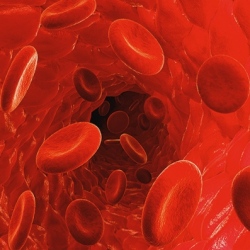
Scientists at the National Institute of Standards and Technology (NIST) and the National Institutes of Health (NIH) have developed a new type of shape-shifting nanoprobe that can perform high-resolution remote biological sensing not possible with current technology.
Around one-tenth the size of a single red blood cell, the nanoprobes are designed to provide feedback on internal body conditions by altering their magnetic fields in response to their environment. The researchers predict wide-spread applications for the nanoprobes in the fields of chemistry, biology, engineering and, one day, to aid physicians in high-accuracy clinical diagnostics.
Dubbed geometrically encoded magnetic sensors (GEMs), the nanoprobes are microengineered from two plates of magnetic metal disks 0.5 to 2 micrometers in diameter and just tens of nanometers thick. These are formed either side of a polymer gel to create a microminiature sandwiched component.
More specifically, the polymer is a layer of hydrogel, a network of polymer chains that are hydrophilic (absorb water) and are able to expand significantly dependent upon the level of the moisture in the environment in which they are used. Similarly, the gel can also contract when the environment is low in moisture. As such, the expanding or contracting of this gel then changes the distance between the two magnetic disks, and in turn increases or decreases the magnetic field.
This change in magnetic field strength then affects the resonant frequency of the protons contained in water molecules in and around the gel in response to applied radio-frequency radiation. As a result, scanning the environment with a set of different frequencies allows rapid identification of the shape of the nanoprobes at that time. This then allows determination of the remote conditions being measured.
